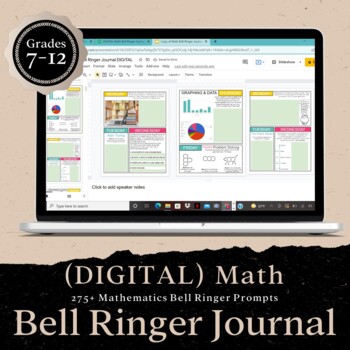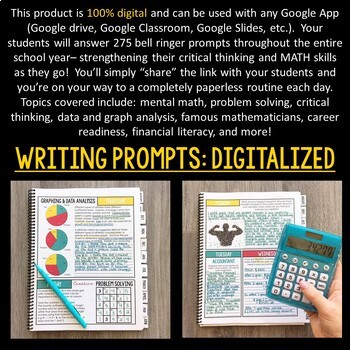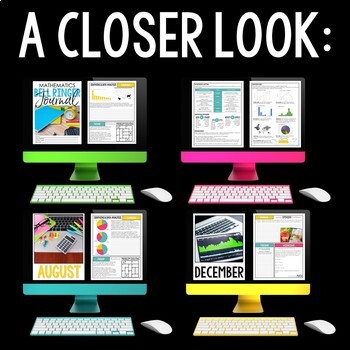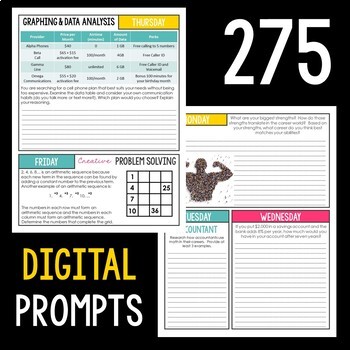DIGITAL Math Bell Ringer Journal for the School Year: 7-12 DISTANCE LEARNING
- Zip
- Google Apps™

Description
Use this DIGITAL mathematics bell ringer journal for the entire school year to strengthen your students' problem solving and critical thinking skills. This journal includes 275 math themed journal prompts for middle and high school students.
NOTE: This journal is designed for Google Apps. You will receive a link to an editable digital file that can be shared with students. Your students will type directly in the text boxes we've provided. This product provides teachers with an entire school year of mathematics-themed journal prompts in an organized and focused way. The journal is organized by month with 25 entries per month. Students will strengthen their reading, math, writing, problem solving and critical thinking skills with these unique, higher level thinking bell ringers.
This product is created by Mrs Brosseau's Binder and The SuperHERO Teacher Mrs. Brosseau is an EXTREMELY talented secondary math and science teacher and is known for her creative resources. In addition, her sister is a numeracy teacher and helped develop some of these hands-on, engaging prompts!
We have included an EDITABLE version of the bell ringer journal to help fit each teacher's needs! You can edit any of the questions and/or headings in the journal.
ANSWER KEY IS INCLUDED.
This resource includes:
✏ 275 unique bell ringer prompts
✏ Open-ended response questions
✏ Analyzing and creating graphs
✏ Financial literacy, growth mindset & career readiness
✏ Creativity in math and problem solving
✏ Mental math & critical thinking
✏ Mathematics careers & famous mathematicians
✏ Timely events based on month
✏ 100% editable
✏ Teacher directions
✏ Cover pages for each of the months
✏ Tabs to keep students organized throughout the year
✏ Zero prep. Simply print and distribute.
A unique, one of a kind mathematics graphing guide is included in the product as well as answer keys for the graphs! Perfect for math test prep!
Download a free sample here:
Math bell ringer journal 2 free week sample
Looking for math classroom decor?! Check out these mathematician posters I designed!
Looking for a Science Bell Ringer Journal? Find it here:
If you like this product, you may be interested in the presentation form or the journal form. FIND THEM HERE:
Connect with Me
Find me on Snapchat: Superheroteach
If you like this product, please leave feedback!





